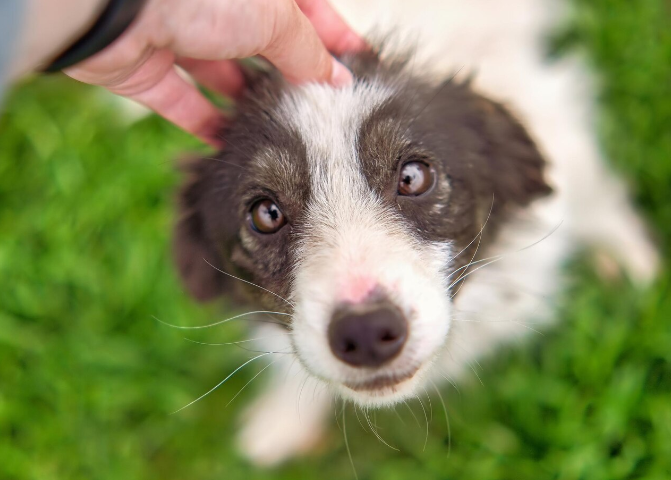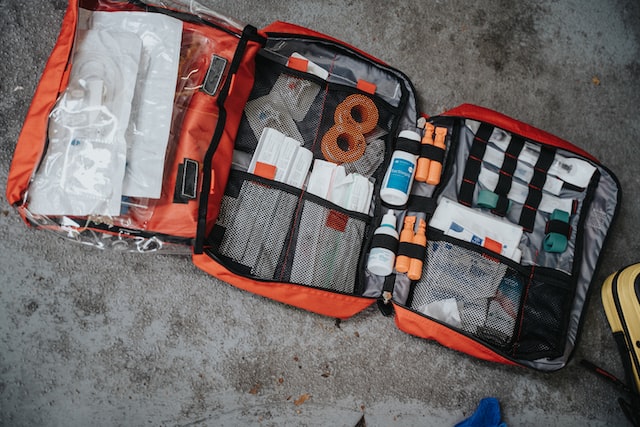- What Is a Service Dog User and a Service Dog Handler
- 1. Search Online for Available Schools in Your Area
- 2. Inquire About the Pricing, Waiting Time, and Available Training
- 3. Go to an Interview With a Representative of the School
- 4. Confirm Your Arrangements With the School/Trainer
- 5. Bond With Your Service Dog
- 6. Do a Public Access Test
- 7. Take Your Service Dog Home

The process of applying for a service dog can be very different across dog training organizations in the US and the UK. I will try to describe the process in seven steps and help you prepare for applying for a service dog. If you are not sure that you need a service dog, you should talk to your preferred medical professional first and then proceed to talk to dog training organizations or private trainers. What you need to consider first is – who can use a service dog – the answer to this question is short — any person whose life is affected by a physical and/or mental disability can benefit from the support and companionship that service dogs provide.
You should know that service dogs are considered medical equipment that has its limitations and should be employed after a careful analysis of what tasks you need to be fulfilled for your daily life. Service dogs are not pets and they can accompany their handler/user almost everywhere with exceptions like food processing facilities and places where sanitation is of utmost importance. A person accompanied by a service dog is protected by the Americans with Disabilities Act in the US and the Equality Act of 2010 in the UK. Service dogs usually wear a vest to show they are working and playing special roles in the life of their handlers/users. However, not all service dogs wear a vest or a harness, some service dogs may have only a bandana or a special leash, or nothing at all. You should check your local laws and consult a local dog training school or a private trainer.
What Is a Service Dog User and a Service Dog Handler
If you are considering applying for a service dog I should make an important distinction between a service dog handler and a service dog user. These positions are not always taken by the same person. For example, a person who has mobility issues could be the handler and user of their service dog. Alternatively, a person’s issues might be severe and they may require another person to be the service dog handler who cares for the dog. In that case, the service dog handler helps them navigate public spaces while the person with a disability is considered the service dog user. If you are a parent of a child who needs support through a service dog you could apply for a service dog and have yourself listed as the handler and your child as the user. You can find our guide in seven steps on how to apply for a service dog below.
1. Search Online for Available Schools in Your Area
Internet is your friend and you can search online for a dog training school in your area so you have a better idea of the options in your region. You could leverage the power of search boxes in social media like Facebook and Instagram. Many dog training schools have active social media pages and aim to promote their services. You will notice that you have extra options if you consider the services of private trainers too. Most people are likely to encounter the pages of Assistance Dogs International, ADEu, and the International Guide Dog Federation (IGDF). At that point, you might begin to search for certification of service dogs and how that is handled in your country.
Neither the US nor the UK has a national register or a certification body that handles service dogs. There are many non-profit organizations that are members of ADI, the ADEu, and the IGDF which provide certificates that are internationally accepted. In addition, there are private trainers who can help you train a service dog at home or at a local facility. If you are traveling internationally a lot, you might want to contact a school that is affiliated with ADI, the ADEu, or the IGDF. Some countries have a list of dog training facilities that are approved by their healthcare ministry and you could ask your doctor about this. Once you find a few interesting prospects in your region you should send them an email, or a message over social media and see if you can call them directly.
2. Inquire About the Pricing, Waiting Time, and Available Training
Most dog training schools and private trainers prefer email to respond to inquiries and include support via live chat and phone lines. Writing an email might be your best choice as you will be able to list your questions, present your case to the school and easily follow up with their representative. There are a few key questions that every person who is applying for a service dog should ask:
— What courses do you provide that could benefit me?
— What are the prices for your courses?
Some schools have custom pricing based on what the client may need, therefore, you need to present your case and then receive a quote.
— How can I fund the training course?
— How much time your course is expected to take?
— Can I travel internationally with my service dog?
I want to return to the funding mentioned above. Obtaining a service dog can be expensive and can be prohibitively expensive for some families. Most dog training schools charge between 20,000 USD to 30,000 USD for proving a trained service dog. Some people may prefer to train their own dog to become a service dog either through an online course or with a private trainer in their city. Please, note that you will need to check your local laws to see if that is allowed. The laws in the US and the UK allow citizens to train their own service dogs at the time this article is being written. Certification for self-trained/owner-trained animals is possible but you need to find the right school for that via the Internet or through your doctor.
Many dog training schools can direct you to non-profit organizations and healthcare programs that can help you pay for a service dog. You could take a loan from your preferred bank to cover the costs or fundraise on your own. It is important to know that most schools and private trainers are likely to require a down payment at the start of the training and ask you to cover the rest at the end of the training.
3. Go to an Interview With a Representative of the School
Once you select a good school in your area or you might have a few options in mind, you should book an interview with their team. You should be able to talk to one of their representatives about your needs and living situation. This is your chance to receive appropriate advice on what breed of dog you could benefit from the most and clear any questions that have not been answered so far. People who apply for a service dog and may suffer from fur allergies should take that into consideration. Your activity levels and space at home will be taken into account as well. You should take this opportunity to describe the tasks you need your dog to fulfill in detail so you can understand what will the service dog be able to do and their limitations.
If you choose to use the services of a private trainer, you will have to talk about the dog breed you want, what breeds will be suitable, and discuss a mutually satisfactory schedule for the training sessions. You will want to consider what I listed above as well. Service dog schools usually work with one or two breeds only and have contracts with trusted breeders and you have more freedom with a private tutor.
4. Confirm Your Arrangements With the School/Trainer
When you have a firm grasp on what your best choice is, you should proceed to make formal arrangements. This usually involves signing a contract; establishing a timeline for the training; sharing information about service dogs and their caretakers, and setting up communication channels to keep you updated on the progress of the training. This will be the stage where you will be expected to pay a down payment and have a plan on how to pay the rest. If you might use the services of a private trainer instead, you are likely to be required to pay on a per-hour basis. I recommend that you read as much as possible about what to expect from your life with a service dog while the training is underway.
5. Bond With Your Service Dog
When the training of your service dog is almost done, your dog training school is likely to call you to visit their facility for one or two weeks so you can build a bond with your service dog. You might need to take a leave from work and you should plan accordingly. Bonding with your dog will be a very important part of the final stages of the training and will shape your experience going forward. A trainer from the school will be tasked with educating you on how to use the service dog, how to navigate public spaces, and how to take care of your dog. There will be plenty of playtime with your dog too. You will be taken to local stores, a mall, a movie theater, a care facility, a public service office, a restaurant, and a hospital with your dog so you learn what to expect and navigate these spaces accompanied by a dog.
If you have chosen the route with a private trainer you are most likely already caring for your dog-in-training. You should have a pretty good understanding of their character and capabilities. It is best to talk to your trainer about anything that you do not feel particularly confident with. That way you could address any issue that may have gone unnoticed and have more confidence while you are out and about.
6. Do a Public Access Test
Before you can take your dog home, you will have to take a Public Access Test and demonstrate what you have learned through the bonding exercises and the time you spend with the school’s trainer. You will be put in real-life situations and the test may include the use of cars, public transport, and visits to a restaurant and a store. Some schools may include a written portion of the test where you need to show that you are aware of your rights as a service dog user/handler and your responsibilities as a caretaker for the dog.
7. Take Your Service Dog Home
The school may recommend a particular veterinarian that they trust when you take your dog home. I recommend that you prepare your home and family for the service dog in advance. There are plenty of good articles online on how to make your home comfortable for a dog, but it is most important to educate your family members on how to treat your service dog and its role in your life. I recommend that you book a groomer in your area and visit them at least once a month or take care of your dog’s grooming yourself. As a rule of thumb, run bloodwork once a year for your dog and go for checks at your local vet at least two times a year.
Many dog training schools will keep in touch with their clients after they leave the facility in order to check if the service dog user is adapting well to their new daily routine. A representative of the school may be in contact with you for the first two or three weeks via email or phone. It is normal for a service dog training school to remain in contact with their clients for up to a year and some may provide ongoing support with legal advice, lifestyle tips, and even arrange events.
If you have questions that I have not answered here, please check our other articles where you may find more information.













